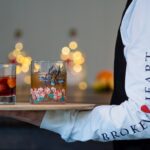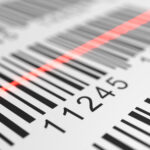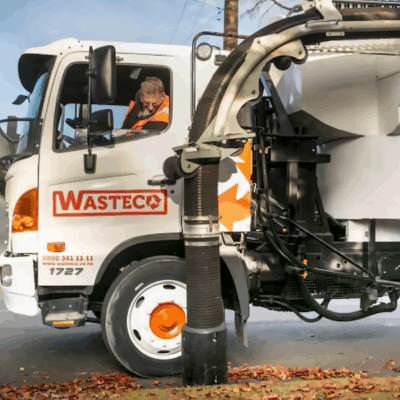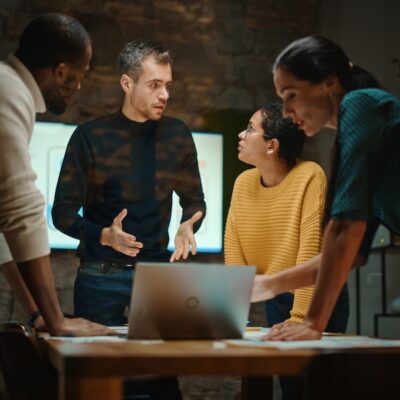Digital location identifiers help prepare businesses for the future
Recently we celebrated the launch of NZBN Organisation Parts and the opportunity available now for businesses to innovate using these globally recognised unique digital identifiers for different parts of their business.
Recently we celebrated with MBIE the launch of New Zealand Business Number (NZBN) Organisation Parts and the opportunity available now for businesses to innovate using these globally recognised unique digital identifiers for different parts of their business.
An organisation can assign Organisation Part[1] identifiers to different physical or logical parts (e.g., branches, departments, delivery addresses, digital locations) to enable accurate, safe digital interactions, and ensure key messages between trading partners (e.g., purchase orders, invoices, deliveries) are directed to the right place.
Laying the foundation – NZ Business Numbers (NZBNs)
The basis for the partnership between the government and GS1 started with discussions between the then Minister for Small Business Maurice Williamson and Xero founder Rod Drury. What was frustrating Rod at that time was that some of his customers were typing into Xero a purchase order, printing it and then faxing it to another Xero customer who then typed the purchase order in, and then did the reverse with the invoice: Digital-to-Analogue-to-Digital-to-Analogue-to-Digital. Mind-numbingly inefficient. It was recognised that reliable, government-backed, counter-party identification and registers for all types of businesses (companies, trusts, sole traders, government agencies) was what was needed to drive efficiency.
GS1’s Global Location Numbers[2] were chosen by the Government in 2013 as NZBNs because they are globally unique, and part of a credible international standards-based system with strong links to trade and supply chain logistics. The government-GS1 team looked to enhance the model deployed in Austria where the Austrian government had deployed GS1 Global Location Numbers to support the tracking of rubbish from identified legal entities in the interests of sustainability and waste minimisation. What New Zealand did better than in Austria was to design synchronised registries between the Companies Office (on behalf of the government) and GS1 NZ, so that all NZBN identifiers and publicly available information were able to be delivered anywhere globally through the GS1-federated Global Registry Platform. A buyer for Tesco’s in the UK would be able to find out easily and reliably who they were trading with.
Now over 831,000 businesses have an NZBN to identify their business, allowing them to trade with confidence and certainty.
The next logical step – NZBN Organisation Parts
Once a business knows whom they are trading with, the next logical step is to drive supply chain and ecommerce transactions. To do that well and in a sophisticated way, you need to identify key parts and locations where transactions happen. Easy to understand examples are the goods-reception point for a supermarket, or the physical location where you are getting your COVID jab.
That is where Organisation Parts, linked to a business’ legal entity identifier (the NZBN) come in. The next phase of the partnership between the Government and GS1 is to enable Kiwi businesses and consumers to be more efficient and globally connected, and a public-private partnership was developed – and rushed into production early to support the COVID Tracer application. Now GS1 GLNs are identifying almost 600,000 locations in a globally-standardised way thanks to the ubiquitous COVID Tracer posters. The deployment of the posters had led to surprising outcomes. Who would have guessed that couriers are scanning organisational parts linked to NZBNs embedded in COVID posters as proof of delivery for parcels? One-scan suffices for two tasks – health / safety as well as proof of delivery! Efficiency delivered!
The future
Organisation Parts have the potential to turbo-charge the digitalisation of purchase orders, invoices, despatch notes and other supply chain and e-commerce processes. Identification of physical, digital and functional locations is also a key to delivering sophisticated solutions such as traceability, e-pedigree and authentication.
Think for a moment about our food & fibre sector.
Currently there is no agreed, standardised and globally-connected approach to identification of farms, fields or regulated locations such as air-dyers for milk, packing houses for crops, barrel halls for wine or landing sites for seafood. Most of the value of our primary produce is generated in overseas markets … and more and more overseas regulators, importers, retailers and even consumers want to know more about where their food comes from.
And sorting this out cannot come too soon for Kiwi exporters. In our largest market, the Chinese government has done such a good job of putting in consumer-exposed traceability on domestically produced food (consumer scanning sophisticated barcodes to deliver substantiation of origin electronically and in real-time) that there is a perceptible change in preferences from the middle class in China towards their own products and away from imported product.
This is the new frontier. Stand-out by fitting in. Deploy global standards for local benefit, and global connections. Already the government-GS1 team are seeing interest for Organisation Parts for creating digital pathways to assist with the tracking of food from the paddock-to-the-plate, medicine to specific cabinets in hospitals and locations of care.
Article by Dr Peter Stevens, CEO, GS1 NZ (pictured).
GS1 is a global family of not-for-profit, member-owned organisations. GS1 New Zealand works together with organisations to share accurate information with their trading communities to streamline the way they work. We do this through industry collaboration and by providing a suite of GS1’s global standards and solutions, including unique identifiers, traceability tools and data sharing system.
There are 8,000+ organisations that are members of GS1 NZ locally, and 2,000,000+ globally. On the GS1 NZ board are senior executives from Business NZ, Countdown, Foodstuffs, Fonterra, Fletcher Building, EBOS Group, the Ministry of Health and others.
We are most well-known for our ubiquitous barcodes and radio-frequency IDs, but also for our ProductRecallnz portal that is run in collaboration with the Ministries of Primary Industries and Business, Innovation and Employment to streamline recalls of food and grocery products, the NZ Business Number (which we operate in collaboration with MBIE) and the COVID Tracer App (where we provide location identification for 580,000+ businesses in the QR code).
[1] Organisation Parts are unique 13-digit Global Location Numbers (GLN) supplied by GS1 New Zealand, and can be allocated by a business for various physical, digital or functional (e.g. the procurement department) locations within their business. Click here for more information including a video
[2] A GLN (used in the NZBN) is a single identifier number for all New Zealand businesses, government agencies and commercial entities, enabled by the NZBN Act (2016), linked to Primary Business Data and using global location number standards.






